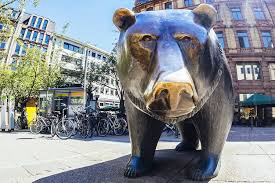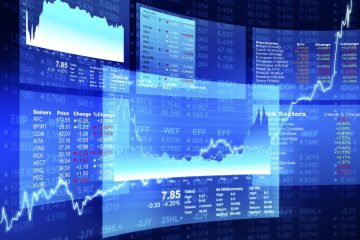Today’s Market Looks Like It Did At The Peaks Before Last 13 Bear Markets

Today’s the day.
After months of preparing financial markets for this news, the Federal Reserve is widely expected to announce that it will finally begin shrinking its $ 4.5 trillion balance sheet.
I know, that probably sound reeeeally boring. A bunch of central bankers talking about their balance sheet.
But it’s phenomenally important. And I’ll explain why-
When the Global Financial Crisis started in 2008, the Federal Reserve (along with just about every central bank in the world) took the unprecedented step of conjuring trillions of dollars out of thin air.
In the Fed’s case, it was roughly $ 3.5 trillion, about 25% of the size of the entire US economy at the time.
That’s a lot of money.
And after nearly a decade of this free money policy, there is more money in the financial system than ever before.
Economists have a measure for money supply called “M2”. And M2 is at a record high — nearly $ 9 trillion higher than at the start of the 2008 crisis.
Now, one might expect that, over time, as the population and economy grow, the amount of money in the system would increase.
But even on a per-capita basis, and relative to the size of US GDP, there is more money in the system than there has ever been, at least in the history of modern central banking.
And that has consequences.
One of those consequences is that asset prices have exploded.
Stocks are at all-time highs. Bonds are at all-time highs. Many property markets are at all-time highs. Even the prices of alternative assets like private equity and artwork are at all-time highs.
But isn’t that a good thing?
Well, let’s look at stocks as an example.
As investors, we trade our hard-earned savings for shares of a [hopefully] successful, well-managed business.
That’s what stocks represent– ownership interests in businesses. So investors are ultimately buying a share of a company’s net assets, profits, and free cash flow.
Here’s where it gets interesting.
Let’s look at Exxon Mobil…
In 2006, the last full year before the Federal Reserve started any monetary shenanigans, Exxon reported $ 365 billion in revenue, profit (net income) of nearly $ 40 billion and free cash flow (i.e. the money that’s available to pay out to shareholders) of $ 33.8 billion.
At the time, the company had $ 6.6 billion in debt.
Ten years later, Exxon’s full-year 2016 revenue was $ 226 billion, net income was $ 7.8 billion, free cash flow was $ 5.9 billion and the company had an unbelievable debt level of $ 28.9 billion.
In other words, compared to its performance in 2006, Exxon’s 2016 revenue dropped nearly 40%, due to the decline in oil prices.
Plus its profits and free cash flow collapsed by more than 80%. And debt skyrocketed by over 4x.
So what do you think happened to the stock price over this period?
It must have gone down, right? I mean… if investors are essentially paying for a share of the business’ profits, and those profits are 80% less, then the share of the business should also decline.
Except — that’s not what happened. Exxon’s stock price at the end of 2006 was around $ 75. By the end of 2016 it was around $ 90, 20% higher.
And it’s not just Exxon. This same curiosity fits to many of the largest companies in the world.
General Electric reported $ 13.9 billion in free cash flow in 2006. Last year’s free cash flow was NEGATIVE.
Plus, the company’s book value, i.e. its ‘net worth’, plummeted from $ 122 billion in 2006 to $ 77 billion in 2016.
So investors’ share of the free cash flow is essentially worthless, while their share of the net assets has also fallen dramatically.
GE’s stock was actually down slightly in 2016 compared to 2006. But the minor stock decline is nothing compared to the train wreck in the company’s financial statements.
Between 2006 and 2016, McDonalds reported only a tiny increase in revenue. And in terms of bottom line, McDonalds 2016’s profit was about 30% higher than it was in 2006.
McDonalds’ debt soared from $ 8.4 billion to $ 25.8. And the company’s book value, according to its own financial statements, dropped from $ 15.8 billion to NEGATIVE $ 2 billion.
So over ten years, McDonald’s saw a 30% increase in profits, but took on so much debt that they wiped out shareholders’ book value.
And yet the company’s stock price has TRIPLED.
Coca Cola. IBM. Johnson & Johnson.
Company after company, we can see businesses that are performing marginally better (or in some cases WORSE). They’ve taken on FAR more debt than ever before.
Yet their stock prices are insanely higher.
How is that even possible? Why are investors paying more money for shares of a business that isn’t much better than before?
There’s really only one explanation: there’s way too much money in the system.
All that money the Fed printed over the years has created an enormous bubble, pushing up the prices of assets to record highs even though their fundamental values haven’t really improved.
As the Wall Street Journal reported yesterday, “Financial assets across developed economies are more overvalued than at any other time in recent centuries,” i.e. at least since 1800.
Investors are paying far more than ever for their investments, but receiving only marginally more value in return. And they’re actually excited about it.
This doesn’t make sense. We don’t get excited to pay more and receive less at the grocery store.
But when underperforming assets fetch top dollar, people feel like they’re wealthier. Crazy.
Today the Fed should formally announce that after nearly a decade, it’s going to start vacuuming up a lot of that money it printed in 2008.
Bottom line: they’re going to start cutting the lights and turning off the music.
And given the enormous impact that this policy had on asset prices, it would be foolish to think its reversal will be consequence-free.


